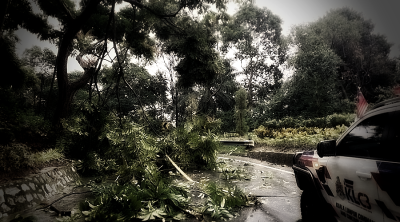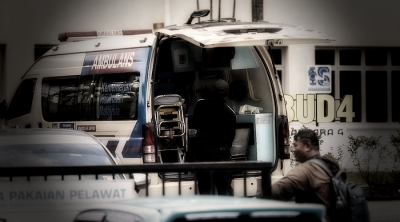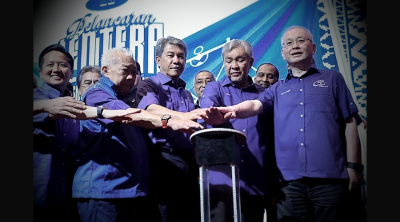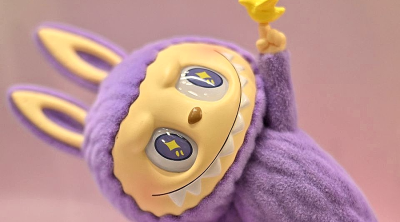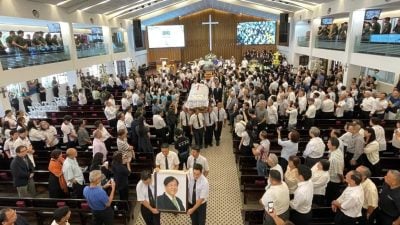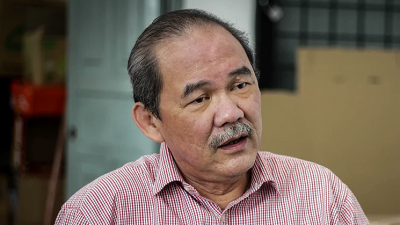The Selangor government has to take the issue of the relocation of the famous Sungai Buloh horticultural nurseries seriously, as horticulture and agriculture are an important component of the state’s economy.
About three years ago, Selangor Agricultural Development Corporation (PKPS) proposed for the nurseries in Sungai Buloh Greenlane (opposite Kota Damansara) to be re-sited in the Bukit Changgang Horticultural Hub near Banting in Kuala Langat.
Most of the nursery owners and operators had paid the deposits and signed the lease agreements.
The site was cleared of the existing oil palm trees, and PKPS promised infrastructural works to ensure the site would be ready for use soon.
However, nothing was done and the site is now a jungle.
Last year, PKPS issued a letter asking whether the nurserymen were still interested in the relocation program, as most of them had cited the far-away distance and the lack of commercial viability for the Bukit Changgang site.
PKPS, too, is of the opinion that the site is not viable for the horticultural business which should be nearer to more urban areas to ensure commercial viability.
When choosing a site to relocate all the nurseries from Sungai Buloh to one venue to ensure the industry’s growth and viability, PKPS should have opted for a site closer to urban areas and not a far-off venue in a mostly rural area.
The nurserymen are now in a dilemma as there is no relocation site ready for them and the present rapid development of Kwasa Damansara (RRI) looms large on the need for an urgent relocation to make way for infrastructural upgrades for the large township.
The present Green Lane site is now in a rundown condition, as the nurserymen are uncertain about the future of the site and no new investments are made or dilapidated structures repaired.
Selangor State Assembly representatives need to raise this matter with Menteri Besar Datuk Seri Amirudin Shari during the on-going Selangor Legislative Assembly session in order to get a positive response and answer from the state government concerning this important issue that affects the future of the horticultural industry of Selangor.
So far none of them has spoken about this important issue that affects a large number of nurserymen.
The Selangor government and PKPS need to find an alternative place as the Bukit Changgang site has been found to be unsuitable and not commercially viable.
Why PKPS chose this site is bewildering to the nurserymen who had in meetings throughout the years proposed sites nearer to urban areas for their businesses to be successful and viable.
PKPS had ignored all these and decided to dump the nurserymen in a remote corner.
Most of the nurserymen had paid deposits amounting to thousands of ringgit for the Bukit Changgang site.
The state government can easily find a better site for relocating the nurseries in a hub closer to the urban areas if it wants the state’s horticultural industry, which accidentally took root in Sungai Buloh Hospital when inmates began growing flowering plants and trees around the hospital during the 1960s.
Since then, the industry has spread around Sungai Buloh and its outskirts.
Sungai Buloh has become famous for its horticulture and landscaping.

The nurserymen, too, have been scouting around for good sites to help PKPS.
They have identified two sites in Sungai Buloh which the nurseries can be relocated. One is the over 100-hectare plot belonging to the Malaysian Rubber Board next to Kwasa Damansara.
This large piece of land was supposed to become the basis of the once much touted Rubber City envisioned by then Primary Industries Minister Tun Lim Keng Yaik.
The scheme could not be realized as it depended on the supply of rubber, but there are hardly any rubber estates in Selangor.
It looks like this project has been aborted as nothing has been done for the last three decades.
In the meantime, the area has turned into a jungle and the old rubber trees have been abandoned. It has become a wasteland when it could be put to good use and earn money for the Malaysian Rubber Board.
Former Selangor Menteri Besar Tan Sri Khalid Ibrahim said in one of the meetings with the nurserymen that the horticultural nurseries could be absorbed by Kwasa Damansara when RRI is developed.
He opined that the nurseries could be included in the green spaces and parks when Kwasa Damansara was developed into a premier residential suburb.
Another site proposed by the nurserymen is the large MRT reserve in Sungai Buloh under the elevated tracks.
The state government needs to look into this proposal and liaise with MRT and other authorities to get approval for the use of the reserve for which the nurserymen are willing to pay a reasonable rental.
The MRT reserve is much safer than the TNB transmission reserve, the water pipeline reserve or the railway reserve.
These two are good options and only the state government and PKPS have the authority to deal with the RRI Rubber Board and MRT Corp who could agree to renting the land if the financial returns are good.
The nurserymen are aggrieved at the way they have been ignored and the way the relocation program had been carried out.
Some were relocated under TNB transmission reserves in Tropicana Petaling Jaya (demolished last week by the Forestry Dept and the District Office), some were given non-existent lots in the Bukit Cerakah forest reserve by PTGS and Petaling district office and the Bukit Changgang as mentioned above has come to a dead end.
The existing nurseries in the Greenlane are in a rundown condition and the nurserymen are facing uncertainty as to how long they can remain in the present site. As such, no new investments on upgrading their business is being done.
The option of staying in the present site in Green Lane for a longer period needs to be answered by the state government.
Despite being a homegrown industry, the Selangor government continues to ignore the full potential of the horticultural industry by not providing incentives and creating a proper and commercially viable center for the industry to flourish.
There is a mistaken belief among government officials that the industry is monopolized by the Chinese, but the truth is that the industry is multiracial, with many Malays, Indians and some foreigners such as Bangladeshis and Indonesians operating the nurseries.
As such, there is no need to be biased against the industry.
The industry plays a vital role in beautifying residential gardens and urban areas, tree planting, environmental rehabilitation, landscaping and even combating climate change with more greenery.
Many nurserymen who have visited other ASEAN countries and China speak of the well-planned horticultural hubs that are thriving due to government efforts to help the industry grow.
These nursery hubs are also popular tourist attractions contributing much to the treasury.
The Selangor government can also do this for the state’s economy and tourism.
(V. Thomas has been regularly contributing to Malaysian newspapers for the last 40 years.)
ADVERTISEMENT
ADVERTISEMENT








